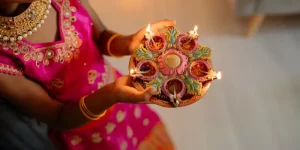Eid al-Fitr – The religious holiday is observed by Muslims worldwide as it marks the end of the month-long sunrise to sunset fasting of Ramadan. It falls on the first day of Shawwal, the tenth month of the Islamic Calendar. It has a particular Salat (Islamic prayer) that consists of two units called “Rakats” generally performed in a large hall. It may only be performed in gathering (Jannat) and features six additional Takbirs (raising the hands to the ears while saying “Allahu Akbar” meaning God is the greatest) in the Hanafi School of Sunni Islam: three at the start of the first Rakat and three just before Ruku in the second Rakat.
Usually, other Sunni schools have 12 Takbirs, split into groups of seven and five. In Shia Islam, the salat has six Takbirs in the first Rakat at the end of Kira’s, before Ruku, and five in the second. Depending on the opinion of juristic locality, this salat is either fard (Obligatory), mustahabb (strongly recommend), or Mandub (preferable). After the salat, Muslims celebrate the Eid al-Fitr in different ways with food being a central theme, which also gives the holiday the nickname Sweet Eid or Sugar Feast. Read Also: Muslim Marriage – Types, Mehr, & Divorce
History of Eid al-Fitr
Eid al-Fitr was started by the Islamic Prophet Muhammad. According to Certain customs, these festivals are commenced in Medina after the migration of Muhammad from Mecca. Anas, a popular companion of the Islamic Prophet, narrated that, when Prophet Muhammad arrived in Medina, he found people celebrating two specific days in which they enjoyed themselves with refreshment and Cheerfulness. Yet, Muhammad marked that Allah had fixed two days of festivity Eid al-Fitr and Eid al-Adha.
General Rituals
Mainly, Eid al-Fitr begins at sunset on the night of the first sighting of the Crescent moon. If the moon is not visible immediately after the 29th day of the previous lunar month (just because clouds block its view or because the western sky is still too bright when the moon sets) then the holiday is celebrated the next day. Eid al-Fitr is commemorated for one to three days, depending on the country. It is prohibited to fast on the day of Eid, and a specific prayer is nominated for this day. As an enforced act of charity, money is paid to the poor and the needy (Zakat-ul-Fitr) before performing the Eid prayer.
Eid Prayer and Eidgah
The Eid prayer is performed by assembling in an open area such as a field, community center, or Mosque. No call to prayer is given for Eid prayer, and it consists of only two units of prayer, with variable amounts of Takbirs and other prayer elements. The Eid prayer is succeeded by the sermon and then a supplication asking for Allah’s forgiveness, charity, calm, and blessings for all living beings across the world.
The sermon also informs Muslims as to the performance of rituals of Eid, such as the Zakat. The sermon of Eid takes place next to the Eid prayer, unlike the Friday prayer which comes first before prayer. Some imans trust that listening to the sermon at Eid is optional. Muslims visit their relatives, friends, and acquaintances after the prayers and hold large communal celebrations in homes, community centers, or rented halls.



